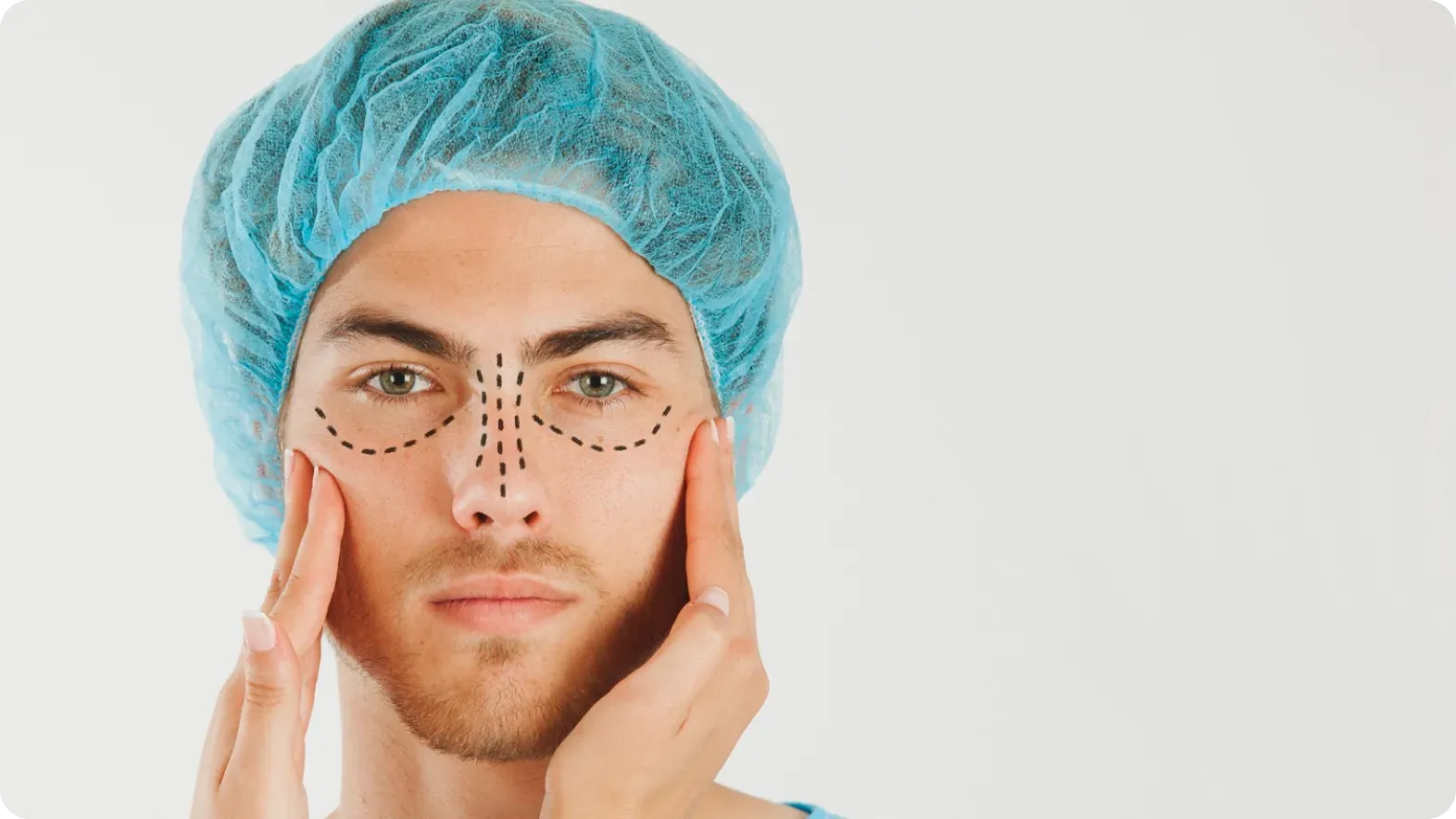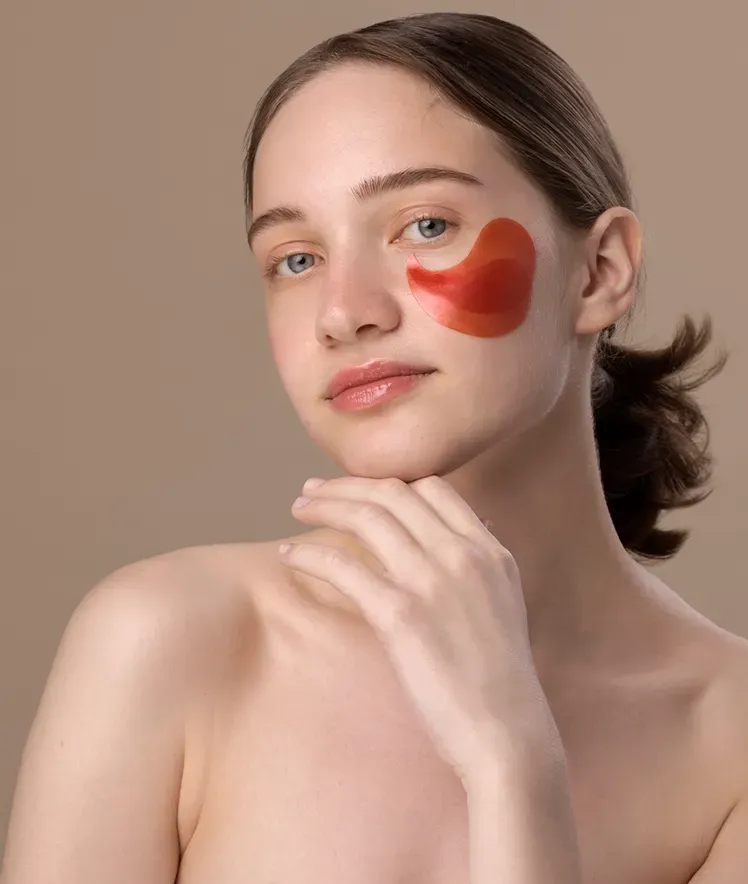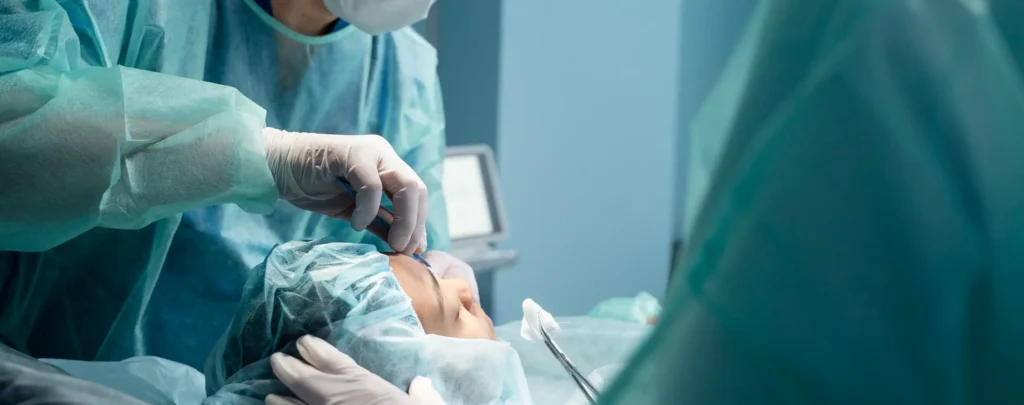Revision Rhinoplasty: Why Some Patients Need a Second Nose Job and What to Ask — Less Common but High Value
November 7, 2025
Elective rhinoplasty is one of the most technically demanding operations in facial plastic surgery. Even when everything goes “right,” tiny asymmetries, how scars mature, or lingering breathing issues can blunt an otherwise good first result. Most people are happy after their primary surgery. But a meaningful minority—often quoted in the literature as about 5–15%—consider a revision. It’s less common, yes, but often high value when it restores airflow, stabilizes the structure, or fine‑tunes tricky aesthetic issues that affect confidence and quality of life.
Below is a practical guide to when revision makes sense, why first surgeries sometimes miss the mark, how surgeons tackle a second operation, and the questions that help you choose confidently.
Below is a practical guide to when revision makes sense, why first surgeries sometimes miss the mark, how surgeons tackle a second operation, and the questions that help you choose confidently.
Scope and Indications for Revision Rhinoplasty
Prevalence, timing, and candidacy criteria
- Prevalence: Revision rates vary by surgeon and patient mix, but 5–15% is a fair benchmark. Rates run higher when the first surgery was complex (post‑traumatic, congenital, or major deformities).
- Timing: Most surgeons advise waiting at least 12 months after the first operation so swelling settles and scar tissue matures. Earlier revision can be reasonable for serious functional problems (e.g., valve collapse) or complications like infection or implant extrusion.
- Candidacy: Good candidates have stable swelling, a clear diagnosis (functional, aesthetic, or both), and realistic goals. Prior op notes, old photos, and a frank discussion of what your anatomy can—and can’t—do set the stage for success.
Functional drivers
- Nasal valve collapse (internal or external): Feels like blockage that worsens as you inhale or exercise, with the sidewall “sucking in” on deep breaths. Internal valve collapse often follows aggressive hump reduction without reconstruction; external valve collapse can stem from weak or over‑resected lateral crura.
- Septal deviation: Persistent or recurrent deviation can choke airflow—especially high septal issues or problems involving the L‑strut after prior surgery.
- Turbinate hypertrophy: Enlarged inferior turbinates (common in allergic or vasomotor rhinitis) can keep you stuffy even after septal work.
Aesthetic drivers
- Pollybeak deformity: A full supratip that makes the profile look beak‑like. Causes include mild dorsal under‑reduction, weak tip support, or soft‑tissue/edema buildup.
- Inverted‑V deformity: A visible midvault step‑off after hump reduction when the upper lateral cartilages separate from the nasal bones—often paired with internal valve narrowing.
- Alar retraction/notching: Upward pull or notching of the nostril rim, typically after over‑resection of the lateral crus or due to scar contracture.
- Saddle nose deformity: Dorsal collapse from lost septal support, trauma, or prior over‑resection—commonly with breathing problems.
Minor touch-ups vs. complex reconstructive revisions
Not all revisions are created equal. Small irregularities or asymmetries can sometimes be handled in the office (light rasping, a touch of filler for camouflage) or with minor OR tweaks. Structural revisions are a different story—think collapse, deviated frameworks, lost tip support, or sizable dorsal deficits. These usually call for an open approach, grafting, and a robust rebuild.

Root Causes of Suboptimal Primary Outcomes
Anatomical constraints and the skin–soft tissue envelope
The overlying skin and soft tissue envelope largely determines what you see:
- Thick skin mutes definition and holds swelling longer; fine tip work may not “read” without structural support underneath.
- Thin skin shows everything—good and bad. Camouflage layers (fascia, diced cartilage) help keep things smooth.
- Ethnic and gender differences in cartilage strength and skin quality affect predictability and should guide planning.
Over-resection and destabilized support
Common technical culprits include:
- Over‑reducing the dorsum without rebuilding the midvault—inviting an inverted‑V and internal valve narrowing.
- Aggressive cephalic trim or segmental removal of the lateral crura—compromising the external valve and leading to alar retraction or sidewall collapse.
- Loss of tip mechanics: Disrupted domal relationships and weak support (e.g., no columellar strut or a compromised L‑strut) cause droop, asymmetry, or loss of projection.
Scar contracture, wound‑healing variability, and patient factors
Healing isn’t one‑size‑fits‑all. Some people form firm, contractile scar that rotates the tip or drapes over the supratip. Others hold onto edema. Smoking, diabetes, autoimmune conditions, prior trauma, and isotretinoin history can all influence outcomes and timing.
Technical selection errors and intraoperative limits
Sometimes the issue is what didn’t get addressed:
- Valves ignored during hump reduction.
- Septal deformity or turbinate hypertrophy underestimated.
- Choosing reductive moves when a structural approach was warranted.
- Intraoperative swelling masking subtle asymmetries—especially with limited visualization in closed approaches for complex cases.
Operative Strategies and Grafting in the Revision Setting
Open structural rhinoplasty principles and exposure advantages
Revisions are typically performed via an open approach (a small transcolumellar incision with marginal extensions). Why? Because it:
- Lets the surgeon safely navigate scarred planes.
- Clearly reveals distorted anatomy.
- Enables structural rhinoplasty—rebuilding a stable framework with grafts and sutures to restore both function and form.
Autologous graft options vs. alloplastic materials
- Septal cartilage: Great for spreader grafts, columellar struts, and smaller onlays—but often partly used up after a first surgery. A stable L‑strut must be preserved.
- Auricular (conchal) cartilage: Naturally curved and pliable—ideal for alar batten and rim grafts to bolster the external valve or fix alar retraction.
- Costal (rib) cartilage: Abundant and strong—useful for dorsal augmentation, septal extension grafts, and major reconstruction. Downsides include a donor‑site scar and potential warping; surgeons minimize this with balanced carving, K‑wire stabilization in select cases, or peripheral lamination.
- Cadaveric (irradiated) costal cartilage: Skips donor‑site morbidity. Modern processing lowers infection risk, though resorption/warping can vary.
- Alloplastic implants (e.g., ePTFE, silicone): Used selectively by some for dorsal augmentation, but in revision noses—especially with thin skin or compromised blood supply—risks of infection and extrusion tick upward. Autologous cartilage remains the workhorse.
Key maneuvers
- Spreader grafts: Rebuild the middle vault, widen the internal nasal valve, and re‑create soft dorsal lines after hump reduction or an inverted‑V.
- Alar batten or lateral crural strut grafts: Stiffen and lateralize weak sidewalls to improve the external valve and prevent inspiratory collapse.
- Columellar strut vs. septal extension graft (SEG): A strut stabilizes the tip base; an SEG more definitively sets projection/rotation, supports lengthening, and helps with short‑nose deformities.
- DCF (diced cartilage fascia) dorsal augmentation: Diced cartilage wrapped in temporalis fascia—smooth, moldable, and great for thin skin or fine contour control.
- Tip refinement: Suture techniques (transdomal, interdomal), shield grafts, and soft‑tissue camouflage restore definition—without over‑resection.
Managing soft‑tissue thickness, edema control, and supratip fullness
- Soft‑tissue handling: Conservative sub‑SMAS thinning can help in thick‑skinned patients, but over‑defatting risks blood supply—camouflage with fascia or diced cartilage is often safer.
- Edema management: Head elevation, cold compresses early on, a low‑sodium diet, taping—and time. Judicious intralesional triamcinolone (e.g., 10 mg/mL) can rein in supratip edema or scar; 5‑FU may be added for stubborn cases.
- Pollybeak prevention/correction: Strengthen tip support (SEG or strut), refine the dorsum judiciously, and remove fibrous supratip scar if present—without over‑reducing the midvault.

Comprehensive Preoperative Workup and Planning
History, nasal endoscopy, and objective airway assessment
- Detailed history: Prior op reports, photos, injuries, breathing symptoms, allergies, and medical issues that affect healing.
- Nasal endoscopy: Directly visualizes the septum, valves, turbinates, and mucosa—key for diagnosing obstruction and supporting insurance when functional work is needed.
- Objective symptom scoring: Tools like NOSE or SCHNOS quantify baseline obstruction and cosmetic concerns, guide planning, and track outcomes.
- Bedside maneuvers: Cottle or modified Cottle tests (gently lateralizing the cheek/alar sidewall) help flag valve collapse; a cotton‑swab at the external valve can simulate a batten graft.
Imaging and tests: when they add value
- CT scan: Helpful for complex/high septal deviations, suspected perforations, chronic sinus disease, or post‑traumatic noses—otherwise not routine.
- Acoustic rhinometry/rhinomanometry: Objective airway data for select patients or for research/insurance documentation—useful, but not mandatory.
Photography, digital simulation, and expectations alignment
Standardized photos from multiple angles are non‑negotiable. Digital simulation can align expectations (and spark good conversations), but it’s an educational tool—not a guarantee. In revisions, simulations must respect limits from skin thickness, cartilage deficits, and scar.
Risk stratification, medical optimization, and revision timing
- Optimize health (glycemic control, anemia), stop nicotine, and treat allergies/rhinitis medically (topical steroids, saline irrigations) before surgery.
- Screen for body dysmorphic disorder or unrealistic expectations—revision rhinoplasty can’t fix non‑anatomic dissatisfaction.
- Timing: Most benefit from waiting 12 months post‑primary; go earlier only for significant functional compromise or complications.

Questions to Ask and Decision Framework for Patients
Surgeon qualifications
- What portion of your practice is rhinoplasty, and how many revisions do you do each year?
- Can you show before/after photos of cases like mine (inverted‑V, alar retraction, saddle nose)?
- Are you board‑certified in facial plastic surgery or plastic surgery, and do you have hospital privileges for rhinoplasty?
Surgical approach, graft sources, and contingency planning
- Will you use an open structural approach—and why for my case?
- Do I have enough septal cartilage? If not, what’s Plan B (auricular, costal, or cadaveric rib)?
- How will you address my specific issues (e.g., spreader grafts for internal valve collapse, batten grafts for alar support, SEG for tip control)?
- What steps will you take to reduce graft warping, displacement, or visibility under thin skin?
Recovery milestones, complication profile, and revision‑specific aftercare
- What to expect: splints 5–7 days, social downtime 7–10 days, exercise limits 3–4 weeks, and refinement over 12–24 months (often longer for thick skin and revision cases).
- Possible complications: bleeding, infection, septal perforation, graft warping/resorption, prolonged edema, asymmetry, sensory changes, or the need for further revision.
- Aftercare specifics: taping protocols, saline irrigations, silicone/pressure for scars, timelines for intralesional steroid options if supratip fullness shows up, and a follow‑up schedule through year one.
Costs, insurance considerations, and coverage for functional components
- Functional vs. cosmetic: Medically necessary parts (septoplasty, valve repair, turbinate reduction) may be covered with proper documentation—endoscopy findings, CT if indicated, NOSE/SCHNOS scores, and proof of failed medical therapy for rhinitis.
- Clarify out‑of‑pocket items (cosmetic refinement, surgeon, facility, anesthesia), how out‑of‑network benefits work, and whether there’s a limited touch‑up policy for small adjustments.
- Ask for a detailed estimate and preauth plan—including whether imaging or objective airflow testing will strengthen coverage.
A simple decision framework
- Name your main goal: function, aesthetics, or both. Prioritize breathing—it’s foundational.
- Consider your comfort with graft harvest (e.g., rib scar and recovery) if major reconstruction is on the table.
- Look for a specific strategy tailored to your deformities—not just reassuring generalities.
- Logistics matter: distance, follow‑up schedule, and access if you need an unplanned visit.
- When in doubt, get a second opinion—differences in plans often clarify your priorities.
Real‑World Examples
- A runner with new obstruction and a visible inverted‑V after hump reduction: spreader grafts widen the internal valve and restore dorsal lines; conservative turbinate reduction if hypertrophic.
- Alar retraction and nostril notching after an aggressive cephalic trim: lateral crural strut and alar rim grafts (usually with conchal cartilage) rebuild the external valve and natural alar contour.
- Post‑traumatic saddle nose after over‑resection of the septum: costal cartilage for dorsal augmentation and a septal extension graft, plus DCF to smooth the profile under thin skin.
Conclusion
Revision rhinoplasty is less common, but for the right patient it delivers outsized value. Better breathing, a stable framework, refined aesthetics—it can be transformative. Success hinges on precise diagnosis, respect for anatomical limits, an open structural game plan with dependable grafting, and meticulous aftercare. As you explore your options, ask targeted questions, study the surgeon’s plan for your specific deformities, and align expectations with what your tissues can do. With patience—and the right team—a second surgery can bring you the function and form you hoped for the first time.

Schedule Your Appointment with Dr. Mourad
If you are considering facial plastic surgery and want results that enhance your natural beauty without looking overdone, schedule a consultation with Dr. Moustafa Mourad today. You will receive personal, expert guidance at every step—from your first visit to your final result.
From Our Blog

November 7, 2025 | Dr. Moustafa Mourad | Uncategorized
How Long Until the Final Result? The Truth About Swelling, Shape Changes, and Patience After Rhinoplasty — Managing Expectations
Rhinoplasty is both a structural procedure and a healing journey. Everyone wants to know: when will I see “the final nose”? Fair question—just not a simple one. Bones, cartilage, skin, and mucosa recover on different timelines; swelling fades in waves; and the tip keeps evolving long after the splint comes off. The good news? When expectations match biology and timing, uncertainty turns into confidence. Here’s what happens, why it happens, and how to navigate the process with realistic checkpoints and smart strategies.
READ THE ARTICLE
November 7, 2025 | Dr. Moustafa Mourad | Uncategorized
What Age Is Appropriate for Rhinoplasty? Teen Patients and Adults — Evidence-Based, Age-Related Considerations
Rhinoplasty is one of the most personalized procedures in facial plastic surgery. Age matters—a lot. Not just the number on a birth certificate, but where someone is in facial growth, psychological readiness, and overall health. This guide pulls together the current thinking on how age affects candidacy and planning, comparing teen and adult patients and laying out practical safeguards that keep results safe, predictable, and natural.
READ THE ARTICLE
November 6, 2025 | Dr. Moustafa Mourad | Uncategorized
The Role of Skin Thickness, Nasal Cartilage, and Bone Structure in Your Rhinoplasty Outcome — An Anatomical Deep‑Dive
Every patient wants to know how long recovery will take after their facial plastic surgery procedure. The answer is that recovery isn’t the same for everyone. The timeline depends on the type of facial plastic surgery you choose, your individual healing response, and how closely you follow aftercare instructions. While some procedures allow you to return to regular activities within a week, others require several weeks before you feel fully comfortable in public. The key is understanding that recovery is a process, and each stage brings you closer to the final results you’re excited to see.
READ THE ARTICLE
November 5, 2025 | Dr. Moustafa Mourad | Uncategorized
What to Expect on the Day of Surgery: From Anesthesia to Packing to Going Home — The Day-Of Process
Surgery—big or small—follows a carefully choreographed plan built around safety, comfort, and clear communication. Knowing what happens from check-in to going home can ease nerves and help you prepare in a way that really matters. Below is a practical, step-by-step look at the day itself. Policies vary by hospital and procedure, but this framework reflects widely used standards and best practices.
READ THE ARTICLE